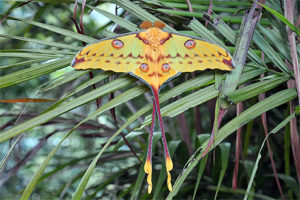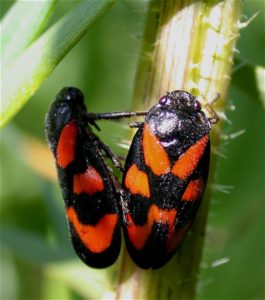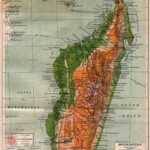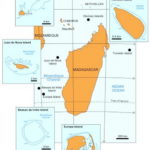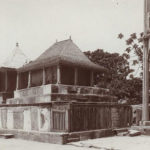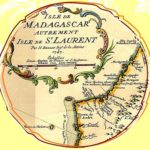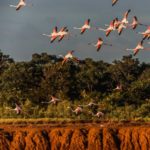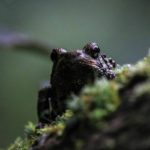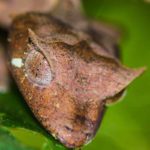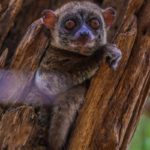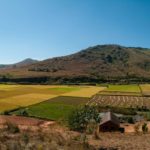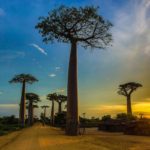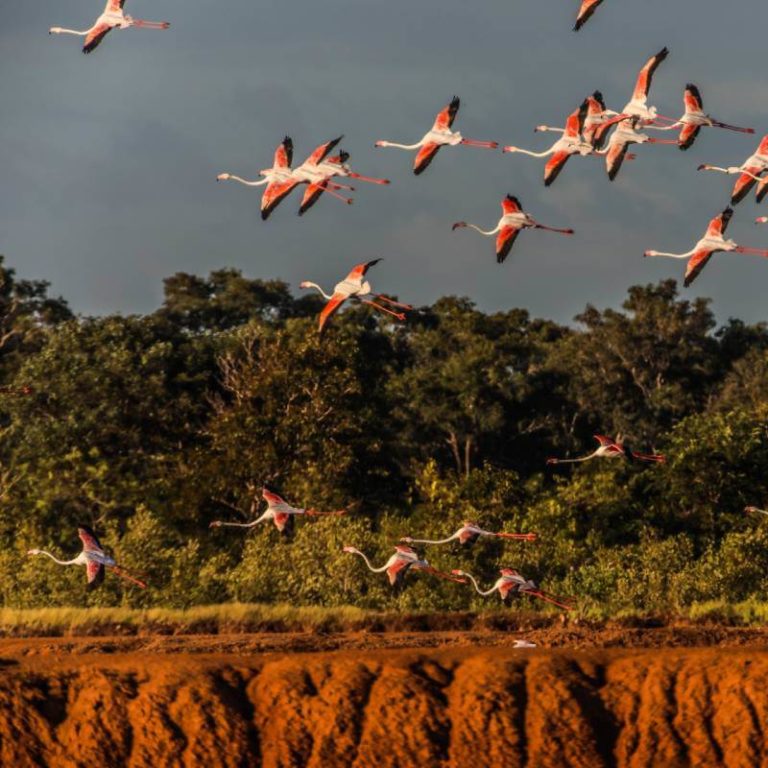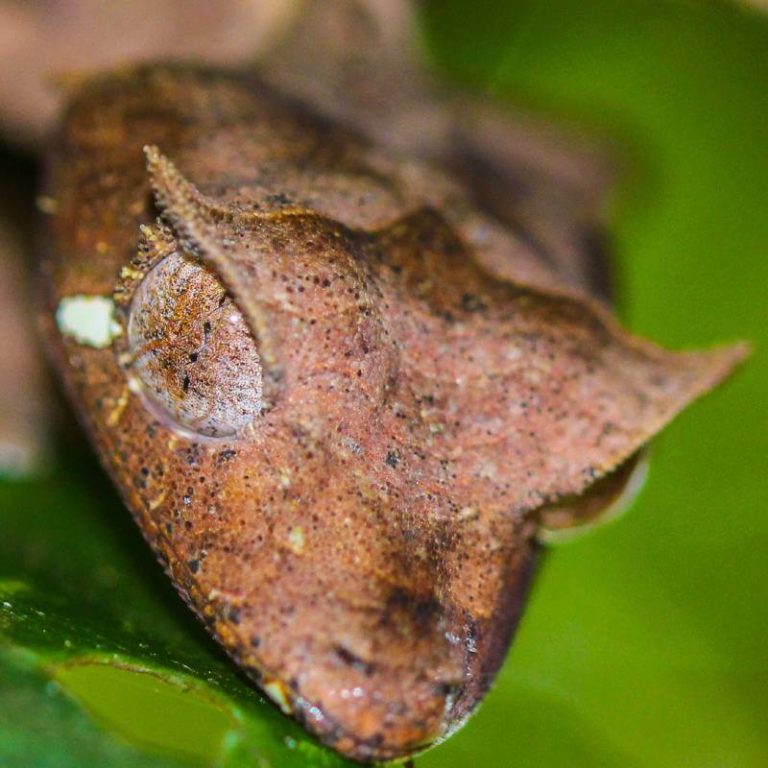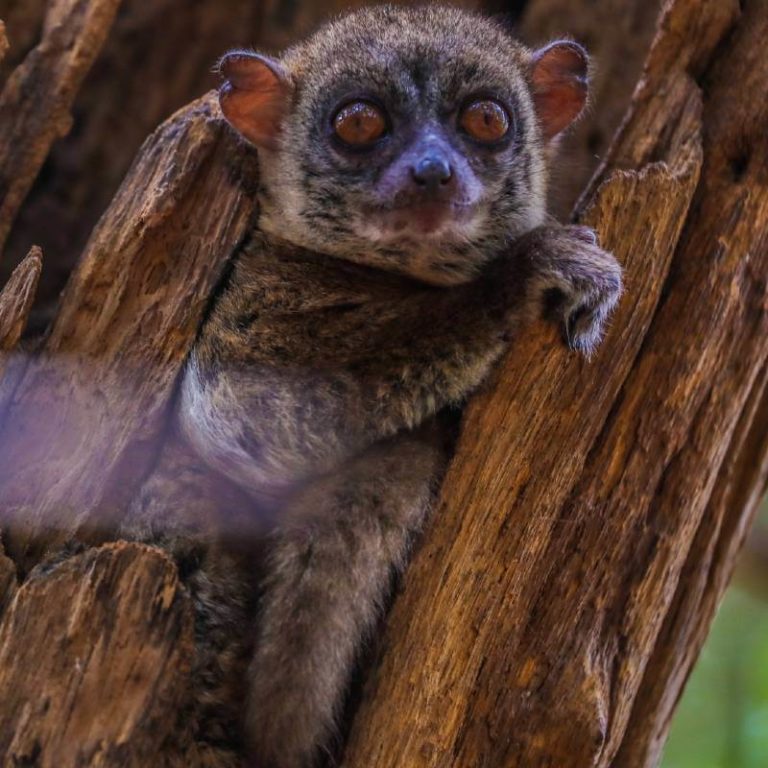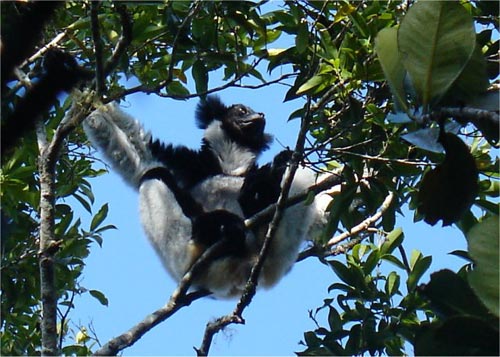The invertebrates of Madagascar
Madagascar is an island that is home not only to many extraordinary mammals, birds and reptiles, but also to many Insects and other invertebrates feel at home. Estimates regarding the numbers vary widely, but usually researchers talk about the fact that in Madagascar, probably more than 100,000 different species native are. With this figure, however, it is important to consider that especially in the world of insects and invertebrates numerous species still undiscovered have remained. After all, many insects are very small and can be easily overlooked with the naked eye. Or they live in the treetops of the high rainforest trees and will therefore probably never be discovered by humans. Thereby the world of insects a real fascination: There are true beauties, real survivors and spectacular daredevils. In the following sections we would like to take you into this world of the smallest animals and give you an insight into the diversity of species living there. For the sake of simplicity, subsequent various invertebrates from different genera and families presented. Many of these animals will be presented to you on a Journey through Madagascar you will certainly encounter, some others you will probably not get to see. However, if you have your Madagascar vacation then you should definitely make a trip to the great National parks and nature reserves of the island. Our Nature travel will take you to a fascinating world and will give you experiences that you will never want to forget. Inquire about the various offers on our site or contact us directly.
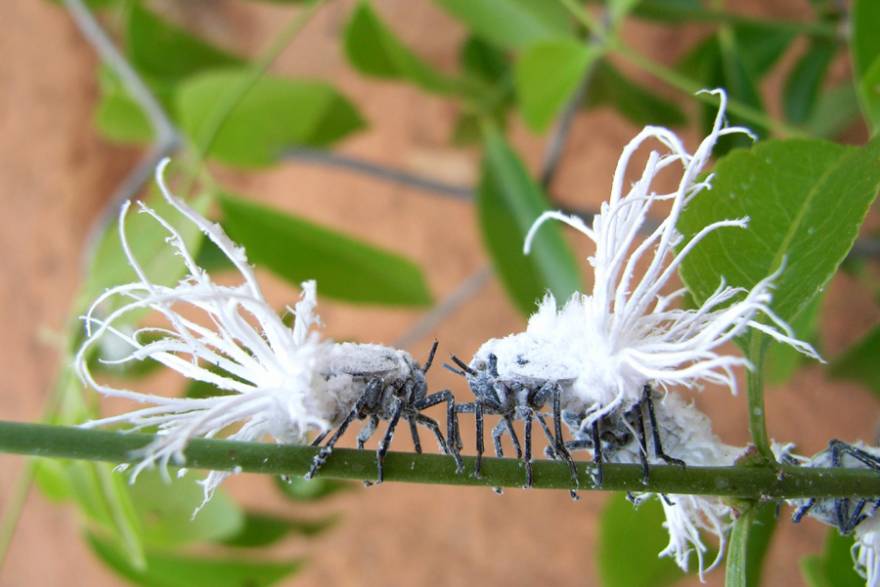
What are actually invertebrates
Among the invertebrates, which are also known as Invertebrata are basically all multicellular creatures that do not have a spinal column. Mammals, birds, reptiles and amphibians are therefore excluded. Meant are in the first place Insects such as ants, butterflies, moths, earthworms, etc. and many other different animal species, of which there are almost innumerable on Madagascar. But even if the number of insects living there seems almost unmanageable, it should be kept in mind that also the Insect habitats have been significantly decimated in recent years. Clearing of forest stands as well as the expansion of human settlements have reduced the space and the Food supply for many insects shrink. Even if most insects are not as cute as the cute lemurs, these creatures also have a right to exist that must be protected.
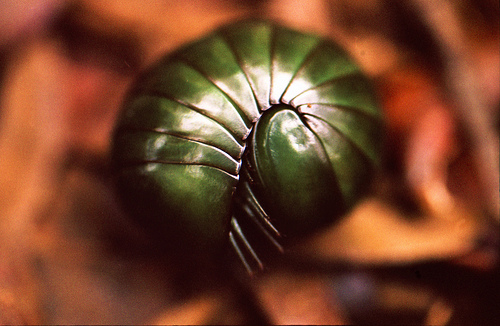
Millipedes and Co. on Madagascar
The different systematic groupings in the realm of insects are partly very difficult to distinguish and are therefore differentiated to the maximum. For the sake of simplicity, our presentation follows a somewhat separate sorting. Especially conspicuous in Madagascar are the so-called Saftkugler, of which there are very many different species on Madagascar. These sap bugs form a separate order in the group of millipedes and surprise with a very exceptional featureIn case of danger, the small arthropods roll up and then form a ball. This behavior is strongly reminiscent of the way small hedgehogs face danger in this country. Also the classic millipedes can be discovered in Madagascar at every corner, so to speak.some species can be up to 30 centimeters long and they are by no means harmless: Hydrocyanic acid-containing secretions are supposed to protect the millipede from predators, and these secretions can also be dangerous to humans. Therefore, it is expressly warned against consumption.
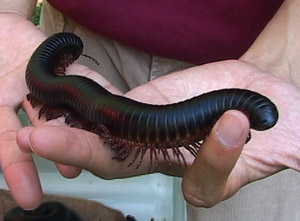
In addition to millipedes, the somewhat smaller representatives of the genus, the Centipede in Madagascar native. They have, as the name implies, a smaller number of pairs of legs and also have a powerful bite scissors on the head. About this bite claw centipedes can secrete a poison that is also unpleasant for humans. A bite causes a painful swelling that can last for several days. The bite of a centipede is usually not life-threatening, moreover, the animals are nocturnal, so it is rarely to encounters with people comes. However, some of the approximately 70 different species native to Madagascar like to hide in shoes. A morning check of the same is therefore highly recommended.
Often seen are the Centipede Chilopodae, which can be found quite often especially in the forest areas of Madagascar. Some of the animals are almost 30 cm long and can be easily recognized by their reddish brown color and the light tentacles. They protect themselves with hydrocyanic acid secretions from predators, but this at least the brown lemur (Eulemur fulvus) from consumption. The ability of some lemurs to chemically neutralize cyanide-containing food is also obvious here.
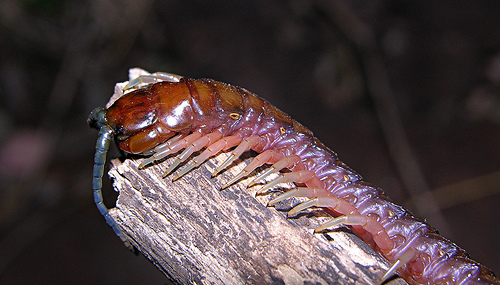
70 types of Centipedes of the genus Diplopodae, also Skolopender are native to Madagascar. The animals are brown to green-blue in color and can be recognized by the much smaller number of pairs of legs compared to centipedes and the powerful biting claw at the end of the head. Since centipedes are nocturnal, the traveler will rarely if ever see them. However, in the coastal regions of Madagascar, it is recommended to check your shoes in the morning, as the scolopenders sometimes hide in them. The bite is extremely painful and the pain lasts for a very long time - the subsequent swelling at the bite site as well. The poisonous effect is apparently considerable.
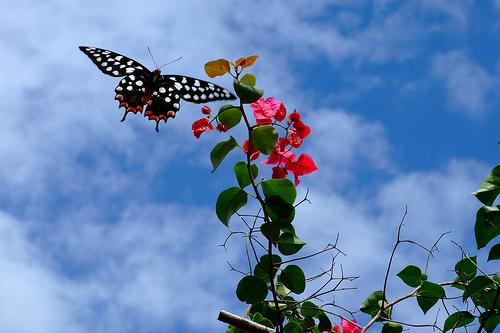
Butterflies and moths in Madagascar
The number of Butterflies and moths in Madagascar is surprisingly high.Overall, it is possible to more than 3,000 different species in this respect, too, it can be assumed that there are also species that have not yet been discovered. How exactly the Butterflies and moths to Madagascar is unclear today. However, it is certain that some species must have arrived on the isolated island after Madagascar's separation from the supercontinent. The Variety of butterflies, moths and butterflies in Madagascar is hard to describe. In all colors and patterns the agile flying insects can be seen in front of especially at ponds and smaller water areas observe. Over the years, regular gathering places for butterflies have developed, where hundreds of the little fellows cavort. Particularly imposing butterflies are for example the Hypolimnas dexitheia or the Charaxes andara. Both species are characterized by a beautiful composition of base color and drawing out, whereby the Hypolimnas dexitheia additionally impresses with its imposing size. Its wingspan can be up to 11 centimeters. Even more impressive in terms of size it becomes only with the so-called Comet tail, a moth that has a Wingspan up to 30 centimeters can show.
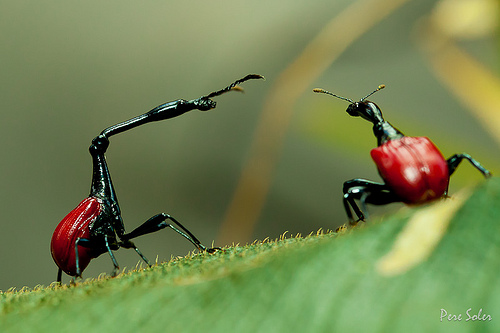
Madagascar beetle
Looking at the number of beetles discovered so far in Madagascar, it is no exaggeration to say that Madagascar is home to a great many different beetles. More than 20,000 different species are currently described by researchers, most of which are endemic species. The special thing about the Madagascar beetles: Many types have only a very narrowly limited habitat us are therefore only found in one particular place on the island. This is precisely what makes it so difficult for local scientists to discover new species of beetles. Particularly abundant on Madagascar is the number of the so-called Jewel beetle off. Splendid beetles are called "splendid beetles" because of their light metallic sheen designated as such and on Madagascar alone have so far been more than 500 different species discovered. Particularly well known is also the Giraffe neck beetlewhich is endemic to Madagascar. This is a beetle of only about two and a half centimeters in size, which is mainly due to its overlong neck stands out. The neck of an adult giraffe neck beetle makes a Length from 1.80 millimeter and is thus longer than the entire fuselage of the Beetle. In various National Parks on the island of Madagascar let these exceptionally spectacular beetle observe. Even more frequently, however, one encounters the altogether twelve different species of dung beetles or pill bugs, which are found practically everywhere on the island where other creatures also exist. After all, the dung beetles need the excrement of other animals to survive themselves.
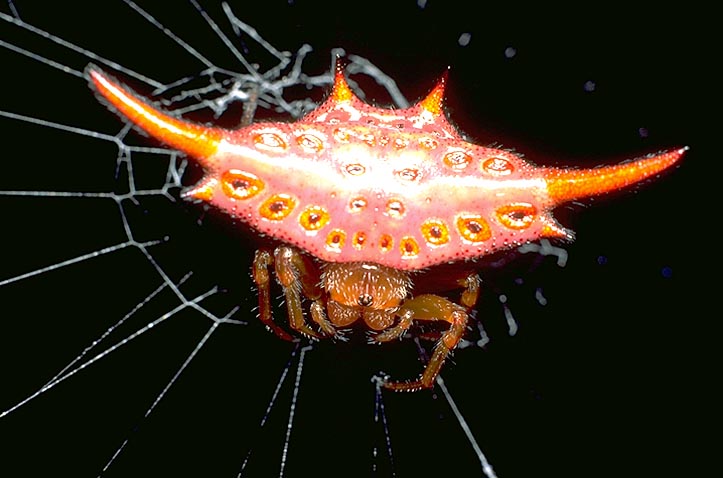
Spiders and scorpions in Madagascar
Madagascar is home to around 400 different species of spiders and also offers for twelve different types of scorpions Place. Tourists who are not familiar with both species should keep their distance. The stings of various scorpions can cause allergic reactions, which in turn can be dangerous for the human organism.
Tarantulas are also found on Madagascar, but very rarely. The few known species are found in the dry forest areas of the west coast,such as in Kirindy.
Wheel web spidern of the genera Nephila and Careostris are encountered more frequently by the traveler: the huge webs regularly span even smaller river courses - an amazing feat of engineering by a single spider! The spiders themselves are not exactly small either, with a wingspan of up to 15 cm, and usually sit in the middle of the web.
For all lovers of the eight-legged creepy crawlies: On Madagascar is the largest spider species in the world domiciled. Under the name Nephila komaci is known this species, whose leg length can include up to twelve centimeters.
Grasshoppers and praying mantises in Madagascar
Praying mantises and grasshoppers are in Madagascar not a rarity. Around 150 different species classified as true grasshoppers, are known in Madagascar. Just the Migratory locust does not have a particularly good reputation among the population of the island state, since the small animals are sometimes considered as real nuisance as they significantly reduced crop yields over a period of years. Also Stick insects, which impress due to their interesting body shape, are native to Madagascar. A total of 80 different species have been discovered so far. The special thing about the stick insects: Most of them master the so-called mimicry. This is the art of almost Fully adapt to the environment and so to camouflage. Accordingly, many stick insects are often mistaken for leaves or small branches. Also these Leaf mimicry can lead to numerous species on Madagascar still undiscovered remain. Also very impressive are the praying mantises, of which there are at least 53 different species in Madagascar. 47 of them have been classified as endemic.
Numerous other insects and invertebrates are at home in Madagascar
In principle, the list of different Insects and invertebrates in Madagascar to be continued almost indefinitely. For example, there are 1,300 different species of bugs on the island, 76 species of dragonflies and hundreds of different species of mosquitoes and mosquitoes. The latter are feared mainly because of their ability to transmit diseases. Cicadas, ants and snails can also be discovered in Madagascar.
Bugs are very numerous with 1300 species. As everywhere in the world, they are a major problem in Madagascar as a crop pest as well as a household parasite. A quite well known and very peculiar bug species is Phromnia rosea rasa. In the larval stage, this bug forms snow-white, lichen-like tufts on its abdomen, which on the one hand actually makes it look like a lichen species, and on the other hand makes it all the more protected by the inedible consistency of this camouflage weave. After the larval stage, an amazing transformation of the bug happens: it transforms its abdomen so that the wings look like pink flowers, which at first glance looks like an orchid. Since the animals always appear in clusters, this effect is very effectively amplified. Moreover, Phromnia rosea apparently plays an important role as a provider of food and water for the tiny Mausmaki (Microcebus). Recent research has shown that some species of mouse maki can only survive the extreme dry periods in their habitats in hot western Madagascar by licking up a water- and sugar-containing secretion secreted by the bug larvae!
Bees are widespread in Madagascar. Almost as old and widespread is also beekeeping! Everywhere in the highlands you can buy the most different kinds of honey in the southern spring. I had personally organized and accompanied a trip for French beekeepers. The beekeepers organize themselves and on the east coast there is even an association of beekeepers to export the Litchi or the Niauly honey to Europe. The best eucalyptus honey in Madagascar is available from Daniel at Ialatsara Lemurs Forest Camp.
Dragonflies are also among the most beautiful inhabitants of wetlands on Madagascar. 76 species, 40 of them endemic, have been counted so far.
Almost as annoying are the Leech, that can be found in areas like Montagne d ́ Ambre, Ranomafana and Marojejy permanently want to the leather! Contrary to statements to the contrary, it is not enough to protect only the legs from the penetration of the pests: the animals also drop from above and look for the way through the outer clothing. The animals, called lychees by the locals, are initially only about 5mm long and have a diameter of 1mm. These animals are completely harmless.
Cicadas are also on the red island the night orchestra of the tropics. But there are amazing deviations from the usual chirp-chirp: in the dry forests of the west lives a very large, nocturnal cicada species, which has a wingspan of 12 cm and is more like a small bird or a giant wasp. The animals make it impossible to stay outdoors near a light source, especially in the evenings in the spring: the loud and shrill giant buzzers swarm in from all sides, crashing into all sorts of obstacles, including people. During the day, although not in motion, cicadas in the Dry forests and especially in the Tsingy from Bemaraha a stay to a deafening affair.
Snails are found in great diversity on Madagascar: almost 400 species have been counted so far, most of them endemic. Especially in the coastal regions of the west and in the mountainous regions of the north, one finds an astonishing number of species. On the west coast, one finds very large shells of snails in the dry forests, which have extremely steep coils and look more like sea snails.
If you are interested in this Species-rich insect diversity interested, we will gladly take you to the places where you can observe these animals particularly well or also photograph them. Our Nature tours in Madagascar are specially adapted to your individual needs. Find out more today and plan your very own personalized Dream vacation in Madagascar.

